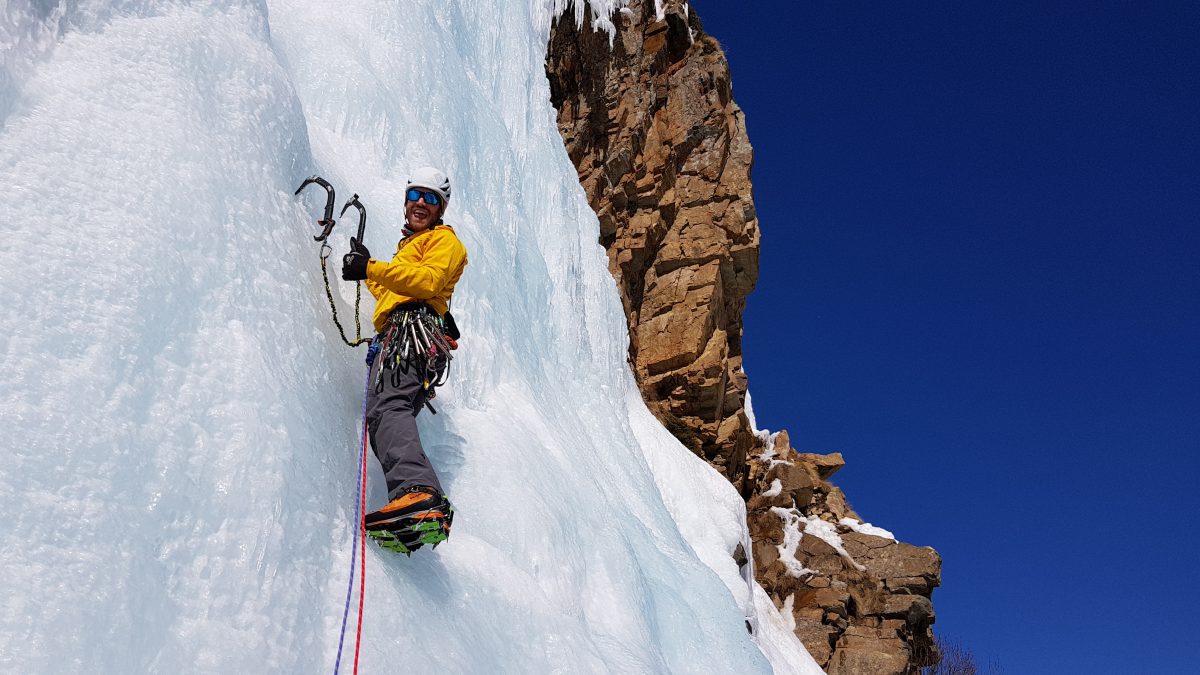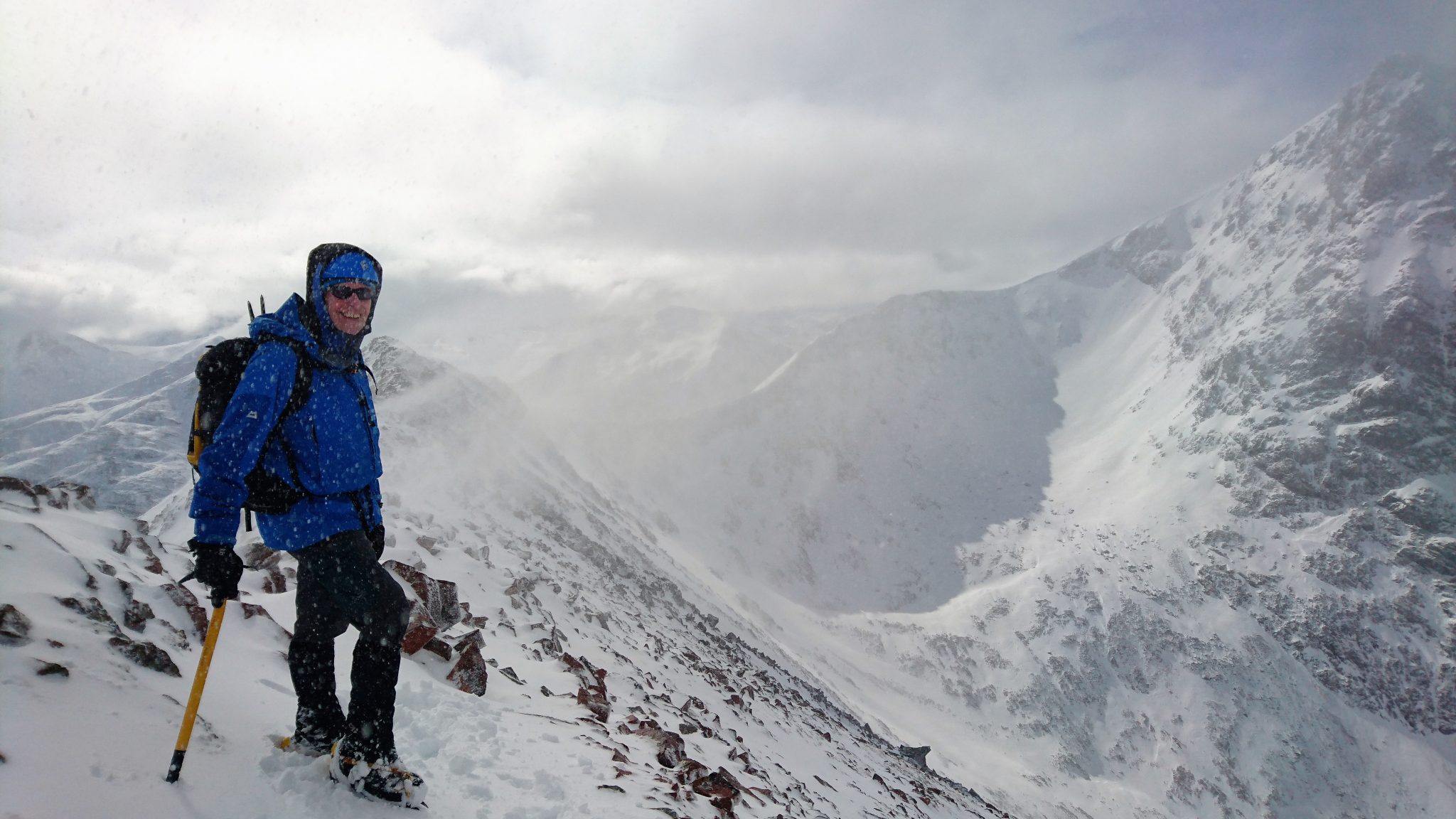
Mountain Weather
07/12/2022
Climbing Point Five Gully on Ben Nevis: The Ultimate Challenge
03/10/2023THE THRILLING WORLD OF ICE CLIMBING
AUTHOR | STEVE HOLMES
In the heart of winter, when nature cloaks mountains in glistening coats of ice and snow, a unique breed of adventurers emerges to conquer the frozen heights. Ice climbing, an exhilarating and physically demanding sport, allows enthusiasts to ascend frozen waterfalls, ice-covered cliffs, and icy rock faces that transform into vertical playgrounds during the winter months. In this blog, we’ll delve into the fascinating world of ice climbing, exploring its history, techniques, equipment, and the unparalleled sense of achievement it offers to those who dare to explore it.
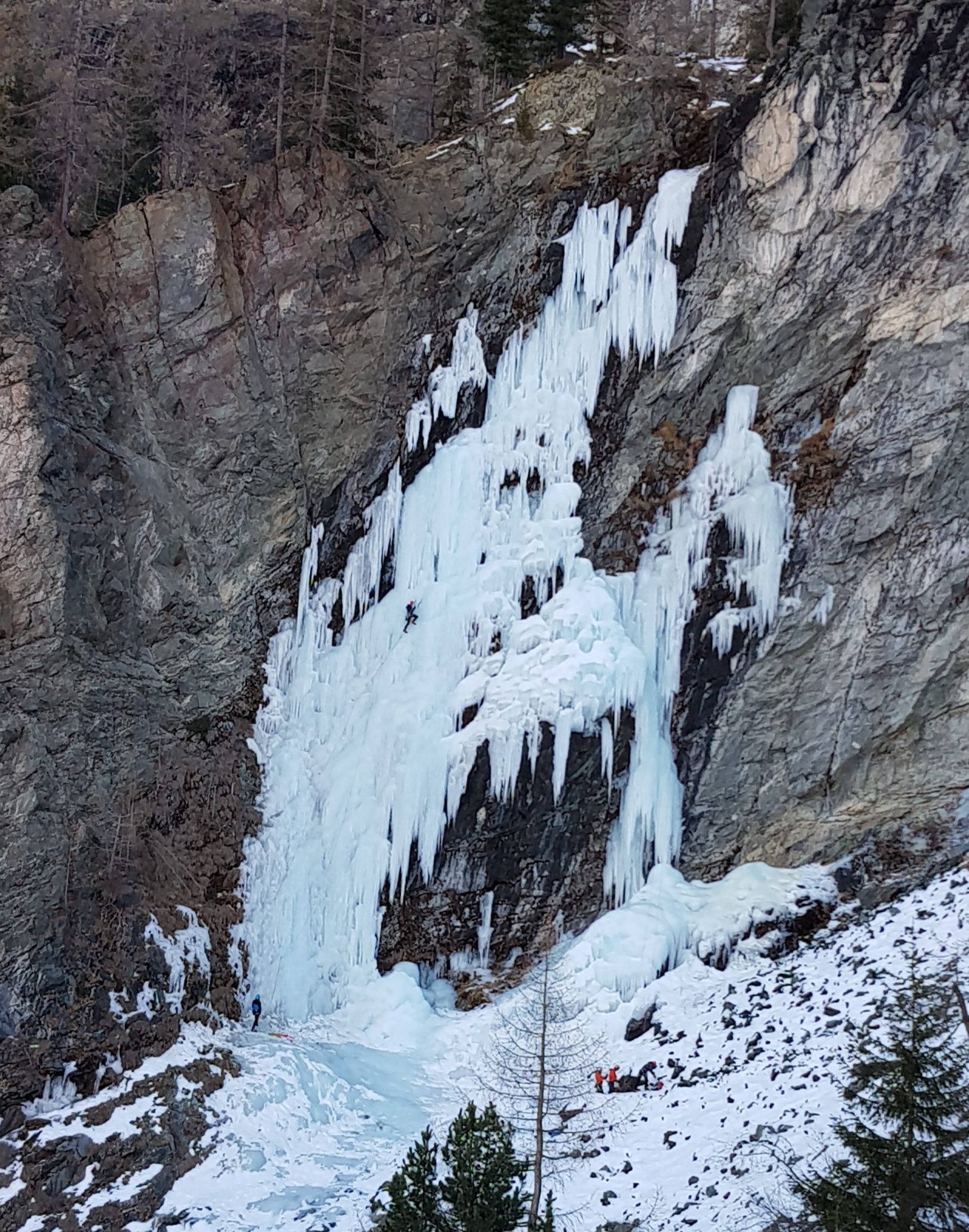
Ice climbing, in many ways, is an extension of traditional mountaineering. It traces its roots to the early 20th century when mountaineers began venturing onto frozen waterfalls and ice-covered terrain. In the early days, climbers used rudimentary equipment, often adapting alpine tools and techniques for ice. These pioneers relied on nails, hobnails, and later, pitons, to secure their ascent. However, it wasn’t until the 1970s that specialized ice climbing gear and techniques started to evolve.
As the sport gained popularity, climbers began developing more efficient tools and safety measures. Modern ice climbing owes much of its progress to innovators like Yvon Chouinard, the founder of Patagonia, who introduced the first curved ice axe, and Jeff Lowe, who pioneered the use of ice screws. These innovations revolutionized the sport, making it safer and more accessible to enthusiasts.
Today, ice climbing has grown into a global sport, with dedicated climbers exploring frozen terrains on nearly every continent. From the iconic frozen waterfalls of Canada’s Banff National Park to the challenging ice-covered faces of the Alps, ice climbers seek out the most breathtaking and challenging routes the world has to offer.
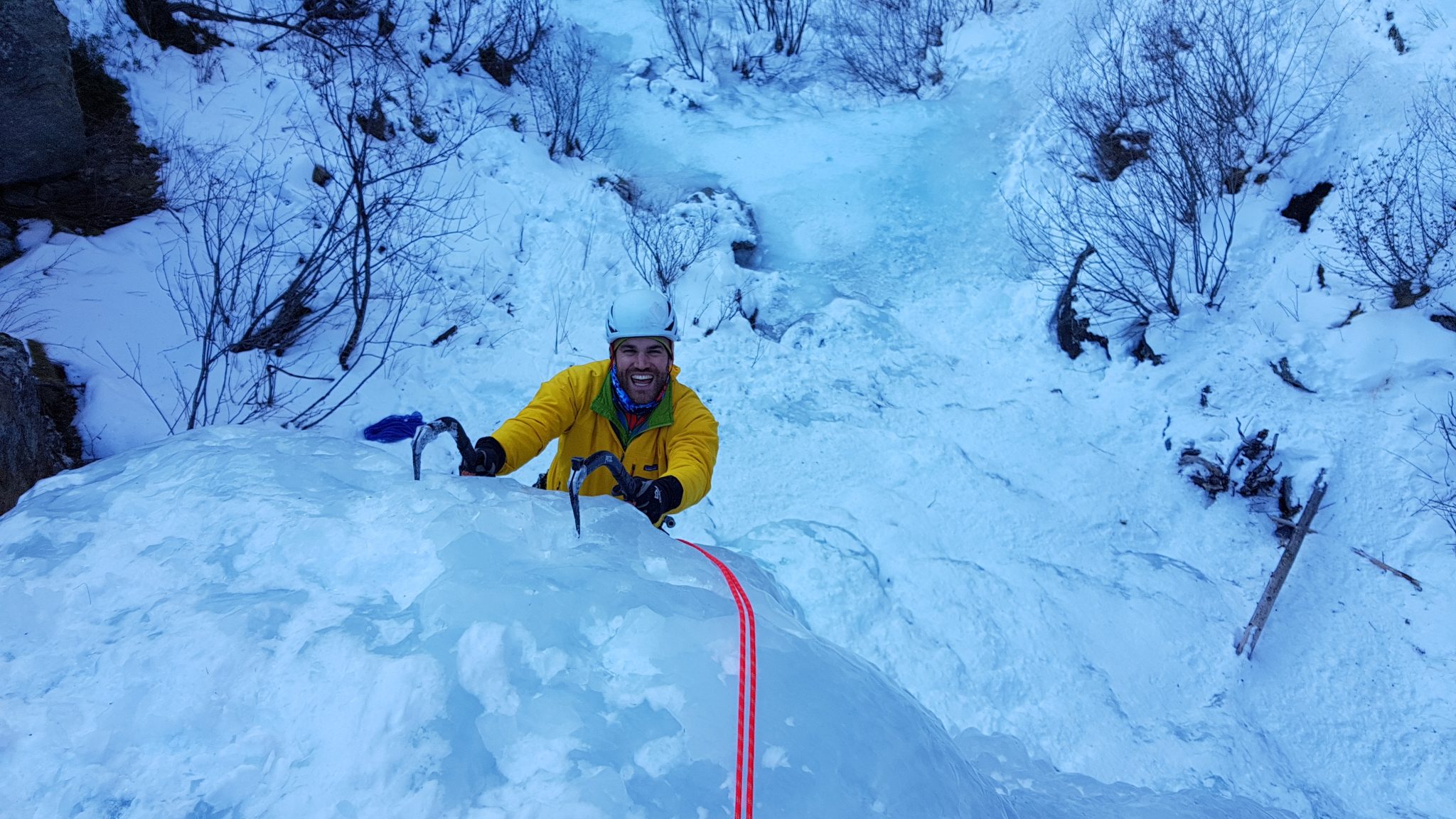
What drives climbers to scale vertical ice formations in freezing temperatures? It’s a question often asked by outsiders, but those who’ve experienced ice climbing know the answer lies in the unparalleled thrill of the sport.
1. The Adrenaline Rush: There’s no denying that ice climbing is an adrenaline-pumping adventure. The very act of swinging ice tools into the frozen surface and kicking crampon-clad feet into the ice is a rush that few other sports can match. The risk factor adds to the excitement, making each ascent a test of both physical and mental strength.
2. The Connection to Nature: Ice climbers forge a deep connection with the natural world, as they grapple with the elements to conquer frozen landscapes. It’s an opportunity to witness the beauty of winter uniquely and intimately, with the ice providing a canvas for their feats of strength and skill.
3. Mental Challenge: Ice climbing is as much a mental challenge as a physical one. Climbers must remain focused, make quick decisions, and trust their gear and abilities. Overcoming the fear of falling and the uncertainty of ice conditions demands a high level of mental fortitude.
4. Sense of Achievement: Completing a challenging ice climb brings an overwhelming sense of achievement. The combination of physical exertion, technical skill, and harsh conditions make every successful ascent a badge of honour for climbers.
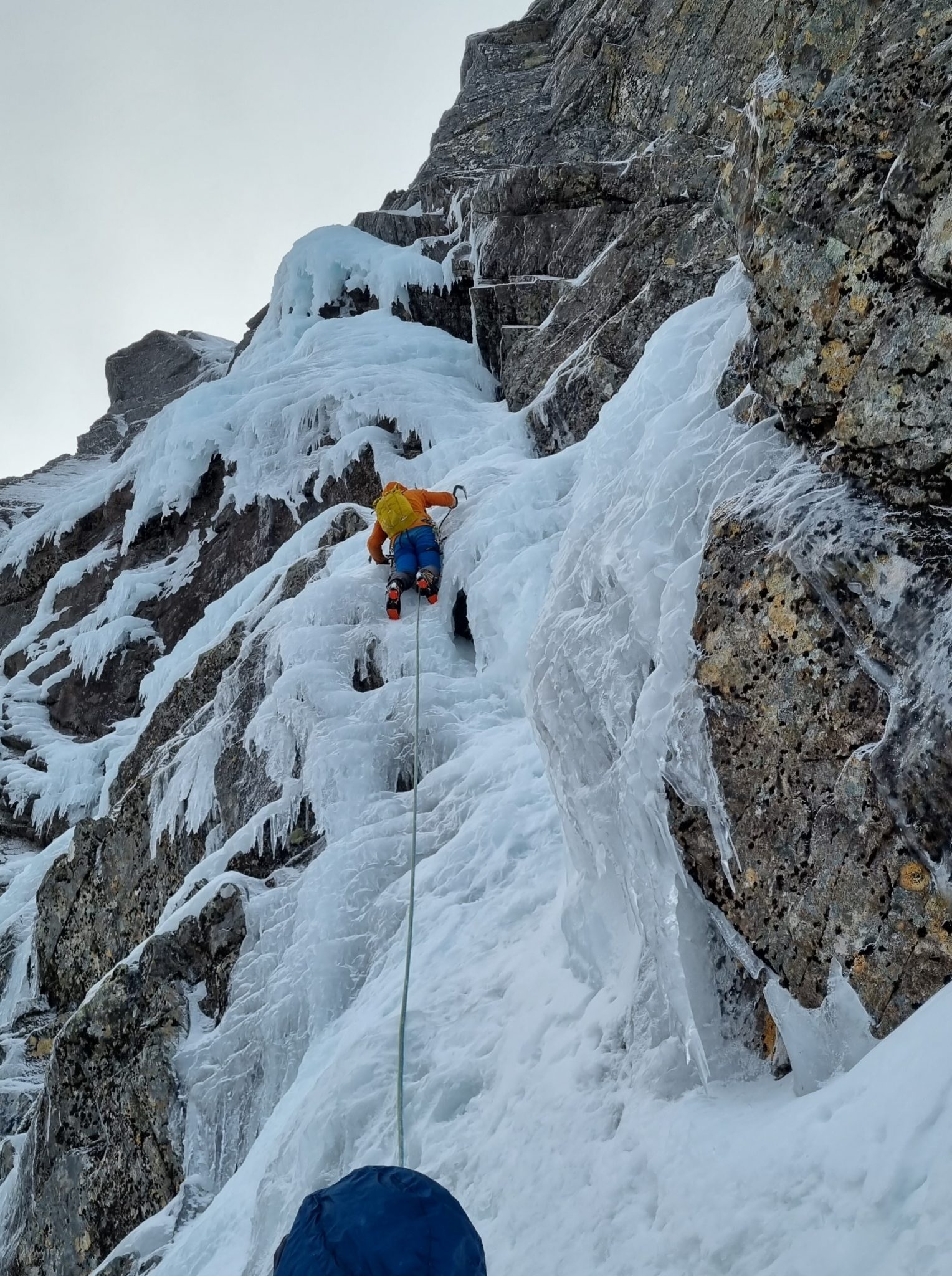
Ice climbing is more than just brute strength; it’s about mastering a range of techniques that allow climbers to ascend safely and efficiently. Here are some essential techniques that every ice climber should know:
1. Ice Tool Placement: Proper placement of ice tools is crucial. Climbers use ice axes and ice picks to sink into the ice, creating secure holds. The technique involves a combination of swinging, torquing, and hooking to find the most stable positions.
2. Crampon Technique: Crampons, specialized spikes attached to climbing boots, provide traction on the ice. Climbers must learn how to kick their crampons into the ice and maintain balance while ascending.
3. Body Positioning: Achieving the right body positioning is key to efficiency and safety. Climbers must learn to distribute their weight properly and use their legs to push upward, saving energy and preventing fatigue.
4. Belaying: Ice climbers rely on belaying techniques to ensure their safety and that of their partners. Proper belaying involves using devices to control the rope and catch falls.
5. Ice Screw Placement: Ice screws are essential for setting up anchors and protecting against falls. Climbers must learn how to place these devices securely into the ice to provide reliable protection.
6. Route Reading: Understanding the ice and choosing the best line of ascent is critical. Experienced climbers develop a keen sense of reading the ice and anticipating changes in its structure.
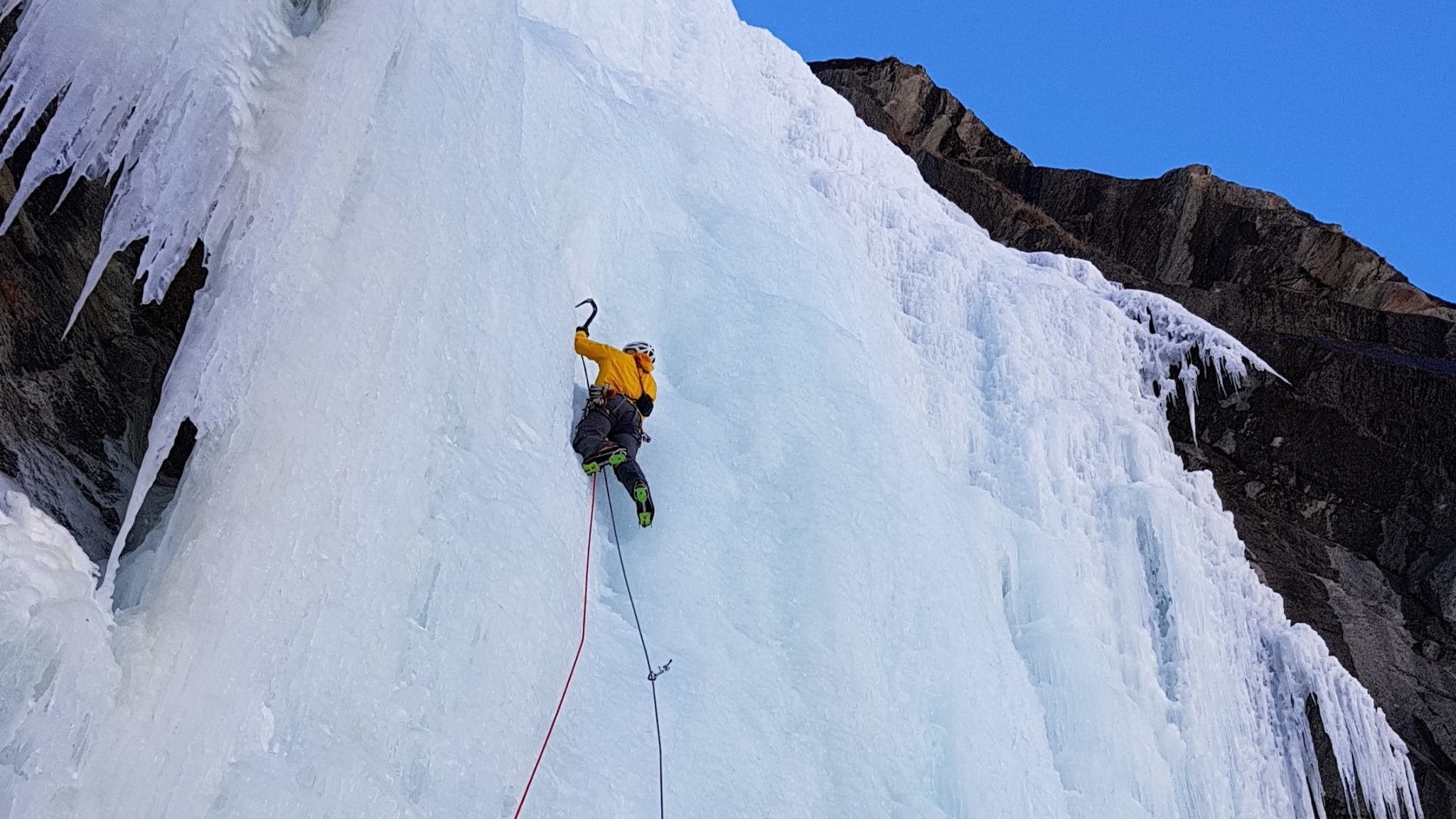
To safely navigate the icy terrain, climbers require specialized gear that offers both protection and mobility. Here are some essential items in an ice climber’s kit:
1. Climbing Boots: Insulated and rigid, these boots provide stability and support while accommodating crampons.
2. Crampons: These are essential for traction on the ice. They attach to climbing boots and come in various designs for different types of ice.
3. Ice Tools: Ice axes and ice picks are used for handholds and secure placements in the ice.
4. Harness: Climbers wear harnesses to attach themselves to the rope and anchors for safety.
5. Helmet: Safety is paramount in ice climbing, and helmets protect against falling ice and rock.
6. Ice Screws: These are crucial for setting up anchors and protection points on the route.
7. Ropes: Climbers use specialized ropes designed to withstand harsh winter conditions.
8. Layered Clothing: Staying warm and dry is essential. Ice climbers wear moisture-wicking base layers, insulating mid-layers, and waterproof outer shells.
9. Gloves: Insulated gloves with dexterity are vital for maintaining grip while protecting hands from cold and ice.
10. Backpack: A small backpack carries essentials like food, water, first-aid supplies, and extra layers.
Ice climbing comes with inherent risks, and climbers must prioritize safety above all else. Here are some crucial safety measures to consider:
1. Avalanche Awareness: When climbing in mountainous regions, it’s essential to be aware of avalanche risks and conditions. Avalanche safety equipment, training, and knowledge are paramount.
2. Weather Monitoring: Keeping an eye on weather conditions is crucial. Sudden changes in temperature and weather can significantly affect ice stability.
3. Communication: Clear communication with climbing partners is essential. Develop a plan for signals and emergency procedures.
4. Adequate Training: Before tackling challenging ice routes, climbers should seek proper training from experienced instructors. This includes learning techniques, safety protocols, and rescue procedures.
5. Safety Gear: Always carry essential safety gear like avalanche beacons, probes, and shovels in avalanche-prone areas.
6. Risk Assessment: Continuously assess the risks associated with the chosen route and be willing to turn back if conditions are unsafe.
7. Emergency Preparedness: Carry a first-aid kit and know how to administer basic first aid for injuries.
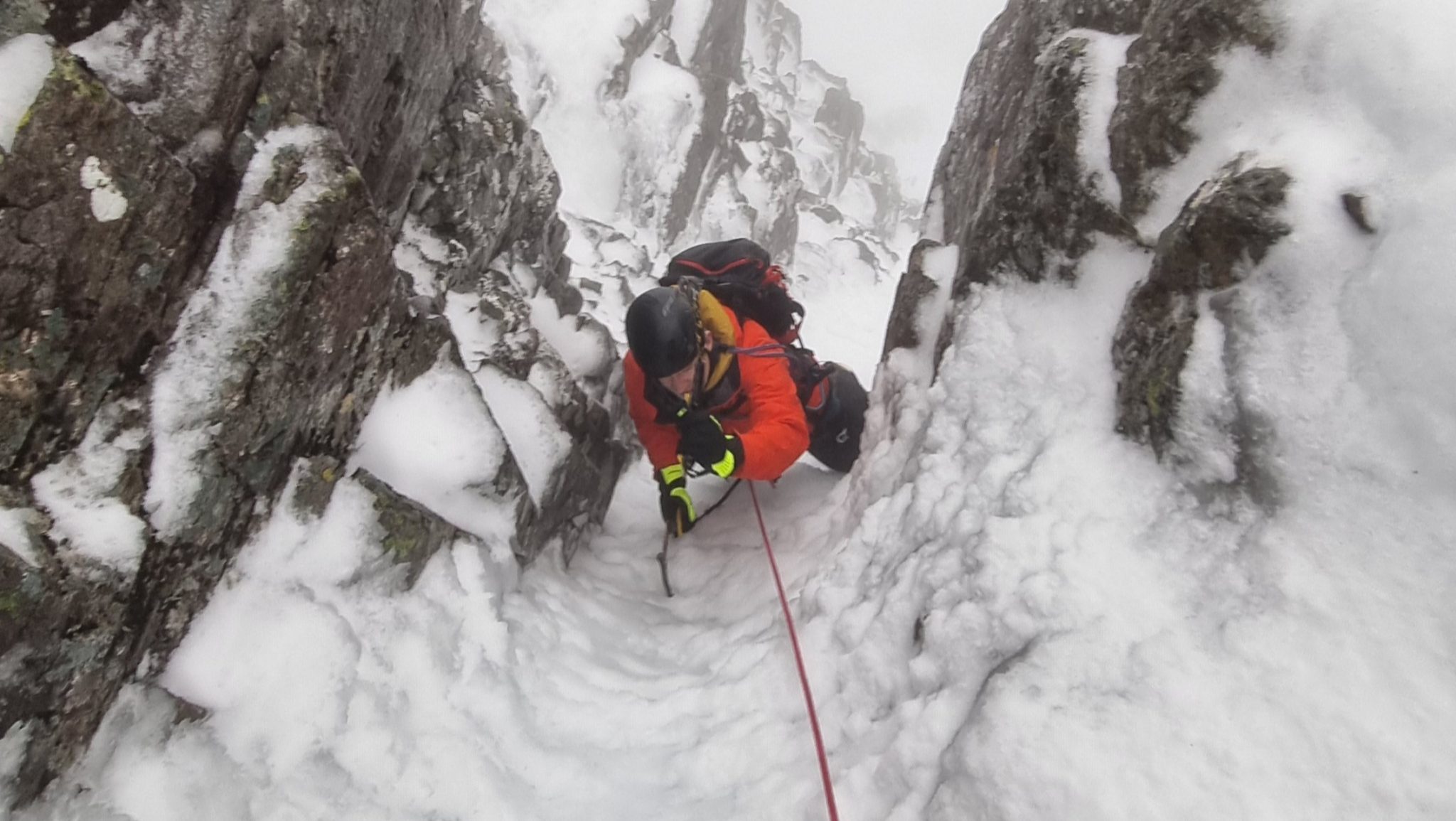
Ice climbing is more than just a sport; it’s a tight-knit community of passionate individuals who share a deep love for the outdoors and the thrill of the climb. Climbing partners often become lifelong friends, bound together by the shared experiences and challenges they’ve faced on the ice. Ice climbing also fosters a sense of stewardship for the environment. Climbers are usually the first to notice changes in the landscape and are vocal advocates for preserving these fragile ecosystems.
Ice climbing is a sport that defies gravity, challenges the human spirit, and immerses climbers in the breathtaking beauty of winter landscapes. It’s a sport that demands physical strength, mental fortitude, and a deep respect for the environment. Whether you’re an experienced alpinist or a novice seeking a new adventure, ice climbing offers an exhilarating journey into the frozen heights of the natural world. So, gear up, learn the techniques, and set your sights on conquering frozen waterfalls and icy cliffs—you’re in for an adventure like no other.
Synergy Guides deliver guided climbing and mountaineering on Skye, Ben Nevis and in the mountains of Glencoe. We also offer instructional courses and bespoke adventures for larger groups.
Synergy Guides deliver Winter Mountaineering from our base in Fort William where we teach people how to stay safe in the winter environment. We aim to cover the basics plus climb some classic introductory mountaineering routes on Ben Nevis and in Glencoe.
Already an experienced winter mountaineer? Take your skills a step further and join us for an Intro to Winter Climbing or push your grades on a Performance Winter Climbing course.
About the author
Steve Holmes owns Synergy Guides, he is a fully qualified Mountaineering Instructor and holds the WMCI (MIC) award. He spends most of the spring/summer on Ben Nevis and the Isle of Skye. You can read more about him here.




